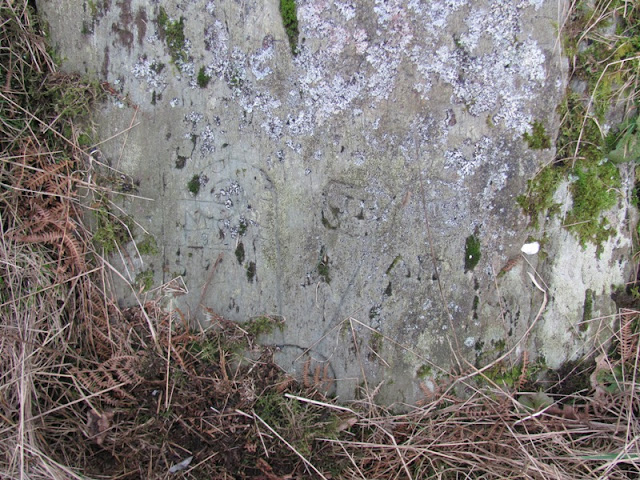The history of the Picts is vague. Perhaps that's a little bit of an underestimation but one of the things that they left behind are a number of carved stones from the 6th century through to the 9th century. They share a number of common patterns which nobody today knows the meaning of. As time marches into the later centuries, you see the stones becoming increasingly christian, decorated with elaborate knotwork but they still use the mysterious symbols on the stones and mythical beasts. In a later blog I'll have several pictures of these stones but in this blog I'm off for a bit of a walk in the country with the intention of finding only one them. It's at Trusty's Hill just outside Gatehouse of Fleet and is one of the few Pictish stones to be found outside the recognised land of the Picts at the time (they mainly lived in the North east of Scotland and this is about as South West as you can get).
In the meantime, this rather toothy fellow brings us to a considerably more recent time, 1612 according to an inscription on the other side of the tomb.
The tomb was inside this ruined church which curiously is dated as 1627 - I really can't see them building a church round about such an large tomb so perhaps it some of the engraved slabs from outside were used to make another tomb inside the church after it fell into disuse.
There may some film buffs out there who are finding this a curiously familiar churchyard. It's Anwoth churchyard and featured in the original Wickerman film. It's from here that I set off up Trusty's hill.
There's not really a lot I can say about the last few pictures, they're just a few scenes from the average assent of a small Scottish hill; a bit field with worryingly large hoof prints, a wood, a fragile dyke, some moor and a rather boggy bit (not pictured). It's a wonder I ever found my way up at all given the confusing nature of the local footpath signs.
Now that's what I'm looking for.
There is clearly a common Pictish symbol - the double disk with a z through it. To me , and indeed others, the z seems to be a broken spear having a pointy end and an end with a ball, which would have been used to help produce more force when throwing or thrusting it. You can see it featured on this page of common Pictish symbols here.
This is a bit more difficult to make out, it's what is normally referred to as a water horse. You can make out the head in the top left of the stone and the curly tail down in bottom right.
The piece of hill that this stone is on is a known iron age hill fort which may still have been used in when these stones were carved. So far away from their normal area, I would imagine that they have been made by a travelling Pict or a local who had himself travelled to the land of the Picts and seen these carvings for himself.
At the bottom of the stone, apart from a bit of recent graffiti which is why there is a cage installed over the stones, you can make out what look like a couple of antenna coming out of a circle.
My thanks to Antonia Kearton for letting me use this photo from here Flickr page. Not only has she managed to get a much clearer picture of the carving but, when she was there, there was less moss growing on the stone and you can see a quite apparent face within the circle. This is not a known Pictish symbol.
There's a good view of Gatehouse of Fleet from up here.
And in the other direction, past the Rutherford Monument to the sea.
I managed to avoid the bog on the way down but got rather lost instead and came out on the road about half a mile or so from the car. I did manage to see these deer though, who didn't stand around long enough for me to take more than one picture of them.


















4 comments:
Interesting although I do not understand it all, especially the sign post.
Join the rest of us John. The world is full of things I haven't the foggiest about.
Hi Sandy, when I climbed up there not long after I'd returned from my exile, I knew nothing about this.I don't think I was even blogging then.
In fact I didn't know it existed till I read your post.
I'll have to recce it again for a Ramblers walk now. I think a circular walk taking in Cally Palace, Cardoness Castle, Rutherfords Monument and Anwoth sounds like a good walk.
Sounds like a good stretch of the legs Jim. You could finish on a cream tea at the Cally if you're feeling well off - perhaps a pint in the Masonic would be cheaper.
Cardoness castle is on the cards for some time and Rutherford's monument would have been in this blog is it had been in the Summer with a bit more daylight.
Post a Comment